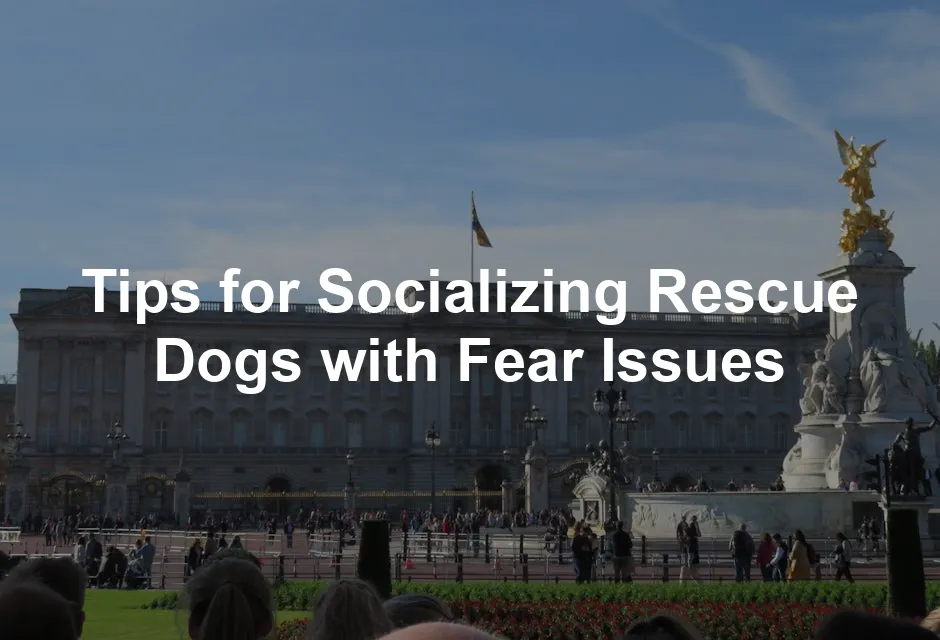Introduction
Rescue dogs often come with a backpack full of emotional baggage. Many have faced neglect or trauma, leaving them fearful of new experiences. Socialization is crucial for these pups, as it helps them become confident and well-adjusted members of your family. A well-socialized dog is happier and more secure, which means fewer anxiety-related issues.
But socializing a fearful rescue dog isn’t always a walk in the park. Owners frequently encounter challenges such as reluctance to meet new people or anxiety around other dogs. These hurdles can feel daunting, but don’t worry! This article aims to provide practical tips and insights to help you navigate the socialization process successfully. With time, patience, and the right techniques, you can help your rescue dog overcome their fears and thrive in their new home.
To make your training sessions even more effective, consider using a Dog Training Clicker. This handy tool can help you mark good behavior with a consistent sound, making it easier for your pup to understand what you want from them. Trust me, your dog will thank you with tail wags and happy barks!
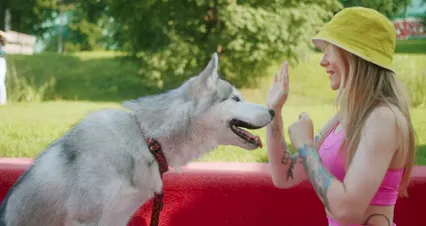
Understanding Fear in Rescue Dogs
The Impact of Past Trauma
Past trauma or neglect can leave a lasting imprint on a rescue dog. Many of these dogs have spent time in shelters or abusive environments, making them wary of new people and situations. Common fears include loud noises, sudden movements, and unfamiliar strangers. For instance, a dog might flinch at the sound of a doorbell or cower when approached by someone new.
Other fears can be more specific—like a dog who becomes anxious around men due to a negative experience in the past. Socialization becomes essential for these dogs, as it helps them learn that the world isn’t a scary place. They need to understand that not all people and experiences are harmful. This gradual exposure to various stimuli can help them build trust and confidence over time.
Many rescue dogs have had limited exposure to different environments. This lack of experience can cause anxiety when confronted with new sights, sounds, or smells. For example, some dogs may panic at the sound of thunder or bark excessively at other dogs in the park. Understanding the roots of their fear is crucial in helping them navigate these challenges.
Recognizing these fears is the first step in addressing them. Your patience and kindness will go a long way in helping your dog feel safe and secure. With consistent training and socialization, your furry friend can learn to face the world with courage, transforming from a timid pup to a confident companion.
Signs of Fear in Dogs
Understanding your dog’s body language is essential. Fearful dogs often display specific behaviors and signals. Common signs include:
- Cowering: This posture indicates submission. Your dog may lower its body close to the ground.
- Tucked Tail: A tail tucked between the legs is a clear sign of fear.
- Excessive Barking: Barking can be a defense mechanism. It’s a way for scared dogs to express their discomfort.
- Whale Eye: When a dog shows the whites of its eyes, it’s a sign of stress.
- Ears Back: Ears drawn back can indicate anxiety or fear.
- Hiding: If your dog seeks refuge under furniture, it’s feeling overwhelmed.
To better understand your dog’s comfort levels, observe their body language. A relaxed dog has a loose posture, wagging tail, and will engage with you. In contrast, a fearful dog may freeze, tremble, or look away. Recognizing these signals allows you to act appropriately and help your dog feel safe.
If you notice your dog is anxious during car rides, investing in a Dog Seat Belt can not only keep them safe but also help them feel more secure during travels.

The Importance of Socialization
Socializing rescue dogs is vital for their emotional and behavioral health. Proper socialization helps them adjust to their new environment. It provides them with the tools to interact confidently with people and other animals.
When rescue dogs experience socialization, several benefits arise. Firstly, it significantly reduces anxiety. Dogs that are well-socialized learn to face new situations. They become less reactive to unfamiliar sounds or sights. This exposure can be a game changer for a fearful dog.
Moreover, socialization boosts a dog’s confidence. By gradually introducing them to various experiences, they learn to trust their surroundings. Imagine a once-timid dog who now confidently strolls in the park! This transformation enhances their quality of life and strengthens the bond between dog and owner.
Socialization doesn’t just happen overnight. It’s a gradual process. Respecting your dog’s pace is crucial. You’ll see them flourish as they become more comfortable with the world around them.
To aid in this process, consider using a Dog Anxiety Vest. This can help soothe your pup during stressful situations, making socializing a bit easier.
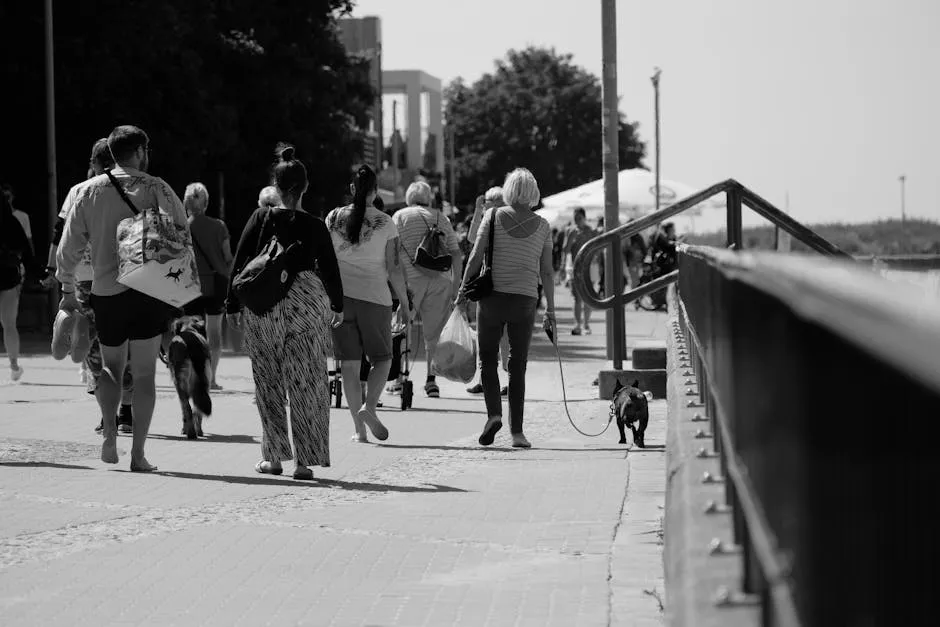
Socialization Timeline
The ideal socialization window for puppies is between three weeks and four months. During this period, they absorb everything like little sponges. Early exposure to various environments is crucial. After this window, socialization becomes more challenging.
For older dogs, the timeline is different. While they can still be socialized, it requires more patience. Adult dogs might take longer to adapt, especially if they have past traumas. Gradually introducing them to new experiences is essential. Whether they’re puppies or older dogs, remember to take it slow and celebrate small victories in their socialization journey.
Tips for Socializing Rescue Dogs
Establishing a Safe Environment
Creating a safe space for your rescue dog is paramount. Think of it as their personal fortress, where they can unwind and feel secure. This area should be free of overwhelming stimuli. A cozy corner with a comfortable Dog Bed and familiar toys can work wonders. Consider using a crate if your dog finds it calming. It’s like their own little sanctuary!
Make sure to include some of their favorite items. A blanket with their scent can help them feel at ease. You might also want to set up a designated potty area outside. This helps establish a routine, which is key for anxious pups. Remember, a predictable environment is a happy environment!
Also, keep noise levels low. If you have a bustling household, consider using soundproofing techniques. Even a White Noise Machine can drown out unsettling sounds. Create a sanctuary where your dog feels they can recharge after facing the big, scary world outside.
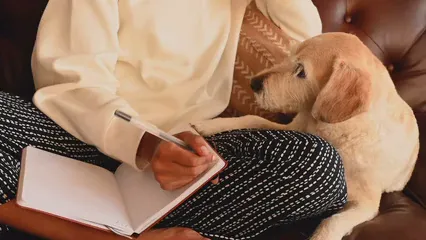
Gradual Exposure to New Experiences
Introducing your pup to new experiences should be a slow dance, not a sprint! Start with brief outings to less crowded places. A quiet park is perfect for this. Let them sniff around and explore at their own pace. Keep your outings short and sweet.
Next, when new people arrive, give your dog the option to approach them. A friend or family member who understands your dog’s fear can assist with this. Encourage them to toss treats from a distance. This creates a positive association with new faces.
When introducing your dog to other animals, choose calm, well-socialized friends. Avoid chaotic dog parks at first. Instead, arrange controlled playdates in a neutral space. Always monitor your dog’s body language. If they seem uncomfortable, back off and give them space.
Each new experience should feel like a tiny victory. Celebrate those moments! A wagging tail or sniffing a new object is progress. Remember, patience is your best friend here. It might take time, but every small step counts.
Positive Reinforcement Techniques
Positive reinforcement is like a secret weapon in your training arsenal. It’s all about rewarding desired behaviors, which makes your dog more likely to repeat them. Treats, praise, and toys are great motivators. For instance, if your dog sits calmly when a doorbell rings, shower them with praise and a tasty Dog Treats. This builds confidence!
Use high-value treats for challenging situations. Think of those delicious morsels as little nuggets of encouragement. When your dog encounters something scary, such as a loud noise, offer them a treat to distract and reassure them. This turns fear into a more manageable experience.
Consistency is key! Use the same commands and rewards across different situations. This creates a clear connection between behavior and reward. Keep training sessions short and fun. A bored dog won’t be as receptive.
Lastly, don’t forget to celebrate progress, no matter how small. If your dog approaches a new person, that’s a win! Celebrate with treats and affection, reinforcing that they’ve done something great. Building a solid foundation of trust and positive experiences will pay off in the long run.
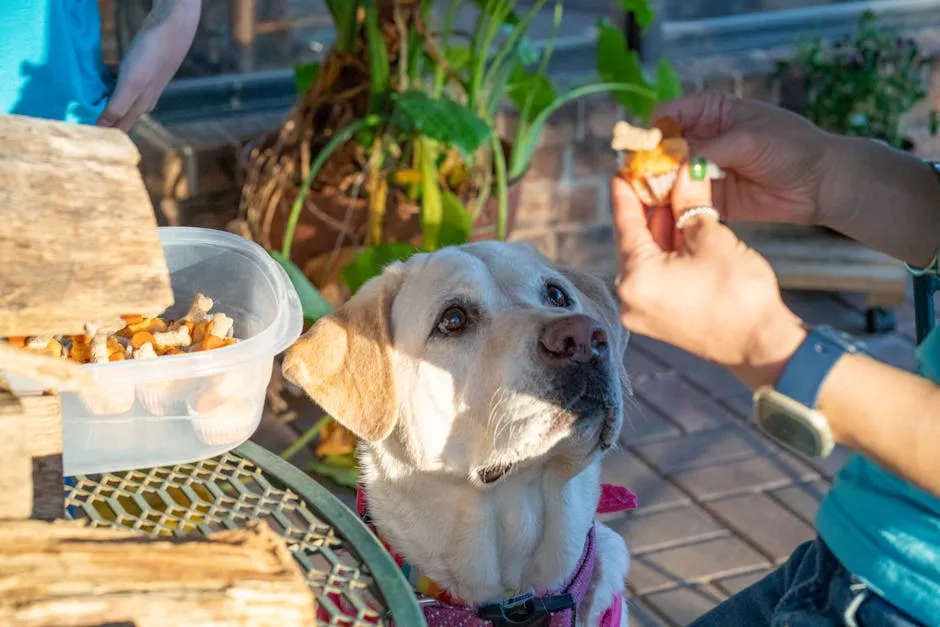
Controlled Introductions
Introducing your rescue dog to new friends—human or canine—can feel like a high-stakes game of chess. You want to win, but you need to think several moves ahead! Start with controlled and positive introductions to keep the experience low-stress. Choose an environment that is calm and familiar, like your backyard or a quiet park. This way, your dog won’t feel overwhelmed by too many new sights and sounds.
When it comes to playmates, you’ll want to choose wisely! Look for calm, well-socialized dogs that won’t scare your pup. Avoid hyperactive dogs that might cause your rescue to retreat into their shell. Gradual introductions are key. Let your dog observe from a distance before moving closer. If they seem comfortable, allow them to interact, but keep it short and sweet. You can always extend the playtime as your dog becomes more at ease.
And don’t forget about humans! Allow your dog to approach new people at their own pace. Use treats to encourage positive associations. If a friend is coming over, ask them to ignore your dog initially. This way, your pup can approach on their terms, avoiding that “forced friendliness” vibe that can send any anxious dog running for cover. Controlled introductions can help your rescue dog build their confidence in new social situations.
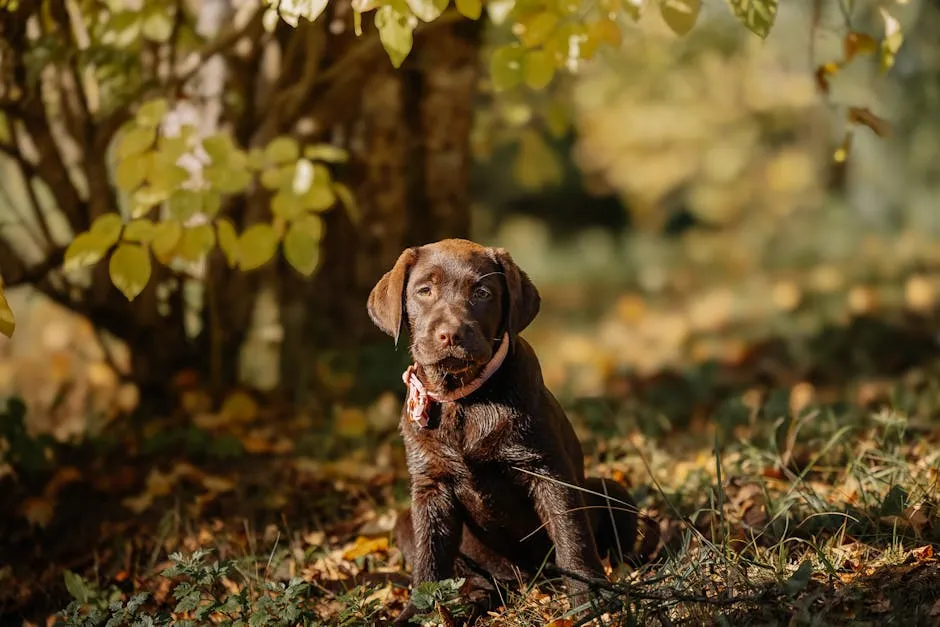
Patience and Consistency
Let’s face it: training a rescue dog isn’t a sprint; it’s a marathon! Progress can be slow, and that’s perfectly okay. Understanding that some days will be better than others is crucial. Celebrate the small victories—like a wagging tail or a curious sniff—as those are the building blocks of confidence.
Staying consistent is essential for both you and your dog. Try to maintain a regular routine for socialization and training sessions. Dogs thrive on predictability! Use the same commands and techniques, and be patient when progress stalls. If you find your dog skittish one day, give them space and try again later. Consistency in your approach will help your dog feel secure, knowing what to expect from you and their environment.
It’s important to remember that setbacks are part of the journey. If your dog has a rough day, shrug it off and try again tomorrow. They’re learning to trust you, and that takes time. Consistent efforts combined with a heap of patience will help your rescue dog feel safe and loved, paving the way for a successful socialization journey.
Seeking Professional Help
Sometimes, you might feel like you’re in over your head. If your rescue dog’s fear issues seem unmanageable, don’t hesitate to seek professional help. A certified dog trainer or behaviorist can provide tailored strategies to address your dog’s unique needs. They can analyze your dog’s behavior and offer insights that you may not have considered.
When looking for a professional, seek out those who specialize in fear-based behaviors. Many trainers offer consultations to help you decide the best course of action. You can find qualified professionals through associations like the Association of Professional Dog Trainers (APDT) or the International Association of Animal Behavior Consultants (IAABC).
Additionally, consider joining a local dog training class focused on socialization. These classes create a controlled environment for your dog to interact with others, under expert guidance. You’ll build a support network with other dog owners facing similar challenges. Remember, reaching out for help is a sign of strength, not weakness. With the right support and resources, your rescue dog can learn to navigate the world with confidence and joy.

Fear-Related Behaviors
Rescue dogs often exhibit specific fear-related behaviors. These include barking, lunging, or hiding. Understanding these actions is crucial for addressing the underlying fears.
Barking can be a dog’s way of expressing anxiety or fear. If your furry friend barks excessively, it might be their attempt to ward off perceived threats. To tackle this behavior, try redirecting their focus. Use treats or toys to distract them, redirecting their energy towards something positive.
Lunging is another common reaction. This behavior often signals fear or a desire to escape. If your dog lunges at people or other dogs, keep a safe distance during interactions. Gradually introduce them to calmer environments, allowing them to observe from afar. Slowly decrease the distance as they become more comfortable.
Hiding is a sign that your dog feels overwhelmed. Provide a safe space for them to retreat when they need it. Create a cozy nook with their favorite blanket or toys. This sanctuary can help them feel secure and less anxious.
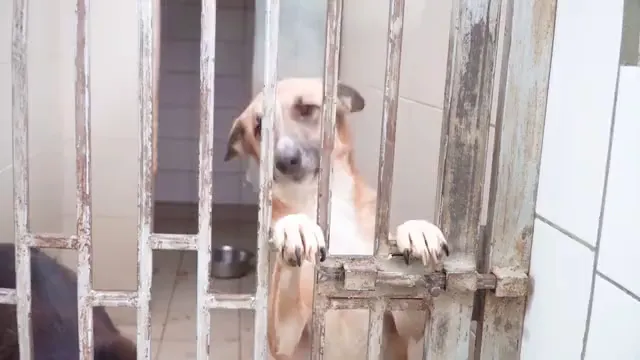
Managing Aggression or Reactivity
If your rescue dog displays aggressive behavior, it’s essential to act calmly and decisively. First, ensure everyone’s safety by removing your dog from the stressful situation. Avoid yelling or punishing them; this can heighten their anxiety.
Next, create controlled environments for introductions. Begin in a quiet, familiar space where they feel secure. Start with short interactions, gradually increasing the duration as your dog becomes more comfortable.
Seeking professional assistance is often necessary for aggressive behaviors. A certified trainer or behaviorist can provide tailored strategies to help your dog manage their fear and reactivity. They can also help you identify triggers and develop a plan to address them.

Building Trust with Your Dog
Building trust with a fearful dog is a gradual process. Start by allowing them to approach you on their terms. Avoid reaching for them or forcing interactions. Instead, sit quietly and let them come to you. Use positive reinforcement when they exhibit brave behavior, like exploring their surroundings.
Trust-building exercises can be beneficial. For instance, toss treats to your dog from a distance. This encourages them to associate you with positive experiences. Another effective exercise is playing “hide and seek” with treats. Hide treats around your home and let your dog find them. This promotes confidence and shows them that good things happen when they explore.
Remember, patience is key. Celebrate small victories as your dog becomes more comfortable around you. The journey to trust can take time, but the bond you build will be worth every moment.

Frequently Asked Questions (FAQs)
How long does it take to socialize a rescue dog?
The timeline for socializing a rescue dog varies significantly. Factors include the dog’s background, age, and individual temperament. Some dogs may adapt in weeks, while others might take months. Early socialization is critical, especially for puppies. However, adult dogs can still learn and adjust; it just may take longer. Gradually introducing them to new experiences and people is essential, allowing them to progress at their own pace.
For those looking to enhance their dog’s social skills further, check out a comprehensive Dog Training Book that covers effective techniques for training and socialization.
Please let us know what you think about our content by leaving a comment down below!
Thank you for reading till here 🙂
For those looking for effective strategies, here are some dog training tips for adopting a rescue dog with anxiety.
All images from Pexels

